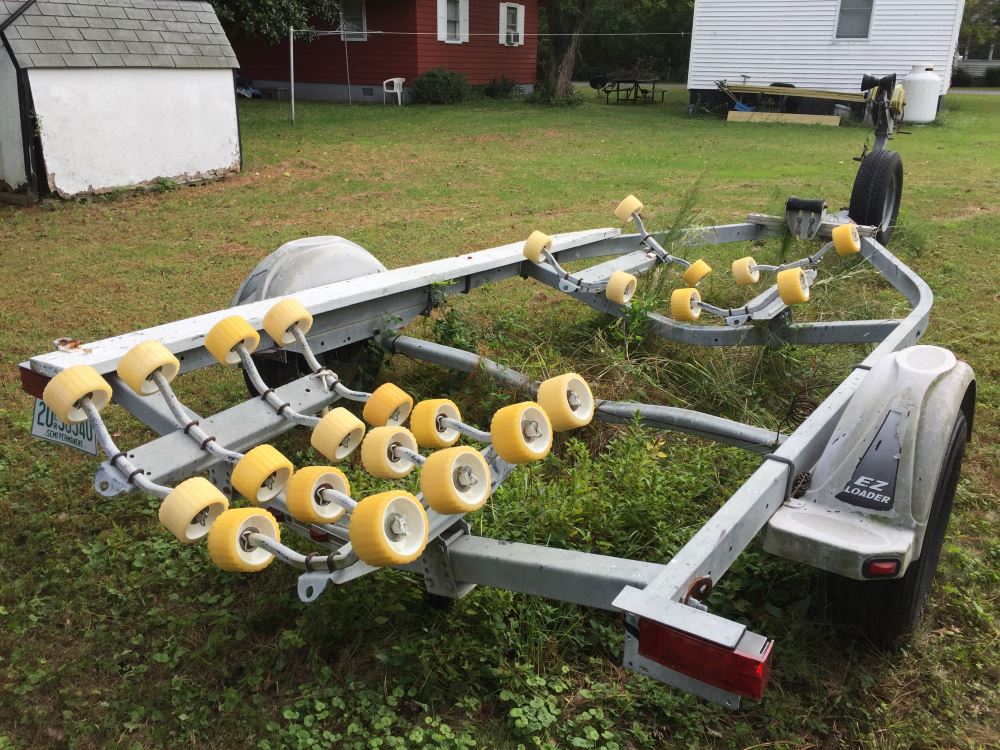

Check the trailer for nongalvanized parts (U-bolts, nuts, wheel lug nuts, add-ons) and spray them with a rust inhibitor like Corrosion X.After haul-out, remove any drain plugs to drain bilge or hull water.Avoid overloading the trailer by removing heavy items from the boat and transporting them inside the tow vehicle (many boaters remove outboards).If the trailer has brakes, test that they are working.Ensure the trailer lights are working, including brake lights and turn signals.Ensure the trailer tongue jack is completely rotated up and locked in place.


BOAT TRAILER WITH SPIDER ROLLERS FREE
Cross the trailer safety chains before securing them to the tow vehicle (the crossed chains “cradle” the trailer hitch if it comes free from the ball).Ensure that the hitch coupler is locked in place and secured with a bolt or lock.Check that the trailer ball is tightly mounted and the right size for the hitch clean any debris from both before seating the hitch on the ball.Check the winch’s operation and the condition of the strap or cable.Check rollers and runners for cracks or breaks ensure rollers are clean and have not locked up.Inspect the whole trailer for cracks or severely rusted areas that may have become weak, including the springs and axles.Check that tires are properly inflated (usually around 50 lbs pressure, not 30-35 like most auto tires) and wheel lug nuts are tight check tire tread for wear and sidewalls for spider cracks that may indicate dry rot.Routine inspections and maintenance will keep your boat or pontoon trailer safe and working for many years.


 0 kommentar(er)
0 kommentar(er)
